A hydraulic cone crusher actually is a cone crusher adopting the method of adjusting the discharging port by the hydraulic way.
History of the hydraulic cone crusher
| Time | Event |
| In 1898 |
Allis-Chalmers invited the first gyratory crusher which can achieve continuously crushing and discharging. |
| In 1926 |
The American brothers invented and applied for a patent for medium and finely cone crushers |
| In 1948 | Allis-Chalmers developed a single-cylinder hydraulic cone crusher |
| In the mid-1860s |
Nordberg company in the United States developed the Gyradisc cone crusher. The basic mechanism is basically the same as the spring-locked cone crusher |
| In 1981 |
Nordberg Company developed the high-energy Omni-con cone crusher whose goal is to increase the production capacity of the crusher in the volume space of the original cone crusher. This kind of equipment firstly adopts the way of separating the moving cone and main shaft, that is to say, the main shaft is fixed so that only the moving cone is designed to perform the swing motion. |
| In the early 1990s |
after about 10 years of research and improvement on Ominicone, Nordberg introduced the HP (High Performance) multi-cylinder hydraulic cone crusher. |
| In the mid-1990s | It also produced the MP series multi-cylinder hydraulic cone crusher |
| In 1987 |
The Finnish Raum-Repola company merged with Nordberg and then establishing the Repola group in 1991. In the same year, Allis-Chalmers sold some of its crushing and grinding machines to Svidala in Sweden. |
| In 1999 | it also produced the MP series multi-cylinder hydraulic cone crusher |
| In 2001 |
Finland’s Metso Group merged with Sweden’s Svedala Group. The European Commission intervened to prevent a possible monopoly that Metso might have in the field of rock crushing, thereby splitting the mining machinery part of Svidala. The current situation was that most of the crushing and sieving producing parts went to Sandvik, Sweden and the little part of crusher development and mill machine were given to Metso in Finland. |
| Until now |
Omin-cone and HP models, while Sandvik has mastered the advanced technology of the bottom single-cylinder hydraulic cone crusher. |
Hydraulic cone crusher working principle?
When the cone crusher works, the rotation of the motor is performed by a pulley or coupling, the cone crusher transmission shaft and the crusher cone under the force of an eccentric sleeve to make a swing motion around a fixed point. Therefore, the crushing wall of the crushing cone is sometimes close to and sometimes away from the surface of the mortar wall fixed on the adjusting sleeve, so that the ore is continuously impacted, crushed and bent in the crushing cavity to achieve the ore crushing.
The motor drives the eccentric sleeve to rotate through the bevel gear to make the crushing cone rotate, which accomplishes the crushing work when the crushing cone is sometimes near and away from the fixed cone.
The connection between the support sleeve and the frame is compressed by a spring so that when an unbreakable object such as a metal block falls into the crusher, the spring will compress and deform to evacuate these objects and achieve insurance to prevent the machine from damaging.
If the foreign matter is stuck in the ore discharge, it can be solved by expanding the discharging port and then the cone crusher is automatically reset by the spring to resume normal work.
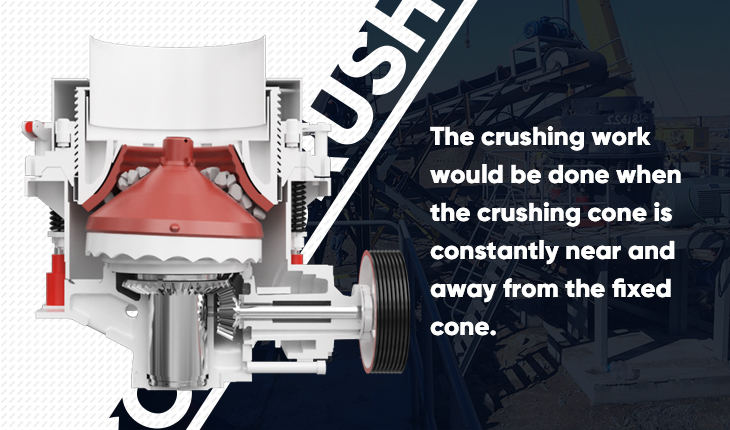
inner part of hydraulic cone crusher
The biggest advantage of hydraulic cone crusher—hydraulic system
hydraulic controlling part
This hydraulic system controls the movement of 3 basic circuits. One is the action of the fixed cone hydraulic locking hydraulic cylinder, the second is the hydraulic motor that adjusts the gap between the moving and fixed cone. The third is the way of the hydraulic cylinder when the iron is released and cleaned.
The lock cylinder is installed between the lock ring and the adjustment ring. It can support the lock ring located on the upper part of the adjustment ring to ensure that the fixed cone is located in the broken position in the adjustment ring when the hydraulic cylinder is pressurized during the crushing process.
When the gap between the moving and fixed cones needs to be adjusted, the pressure of the locking hydraulic cylinder is released, and the motor on the adjusting ring starts to start. The gear on the motor engages the driving ring with the adjusting cap to realize the automatic adjustment.
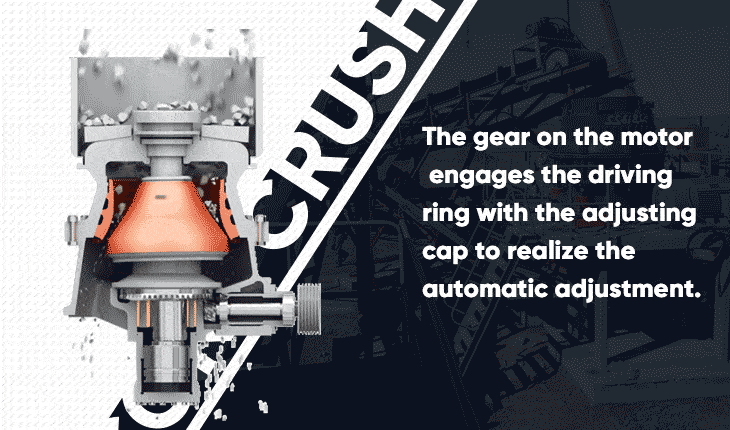
animation of hydraulic cone crusher working principle
The iron release cylinder is connected to the lower part of the mainframe and is fixed with the adopt to overcome the normal braking force. Abnormal operation or excessive crushing force generated by the foreign object as it passes through the crusher cause the adjustment ring to rise. Once the overload disappears or iron passes through the crusher, the crusher returns to normal. Besides, to clean the crusher, the adjustment ring needs to be removed from the mainframe.
Principle of hydraulic system
This hydraulic system uses a fixed displacement plunger pump as the power source, that is to say, it converts the mechanical energy supplied by the prime mover into the pressure energy of the working medium (hydraulic oil). During this period, each hydraulic valve controls and regulates the pressure, flow, and direction, to ensure that the execution part (each hydraulic cylinder and motor) to complete the predetermined law of movement. The maximum pressure of the electromagnetic relief valve adjustment system in this circuit is 20MPa.
The locking circuit is controlled by accumulator pressure and zero leakage solenoid valve. Because the lock cylinder is always in a pressure-maintaining state during the working process, the use of an accumulator to maintain pressure can prevent the plunger pump from starting and stopping frequently. The locking cylinder is a plunger cylinder so that the zero-leakage solenoid valve is reset by the weight of the support part after the pressure is released.
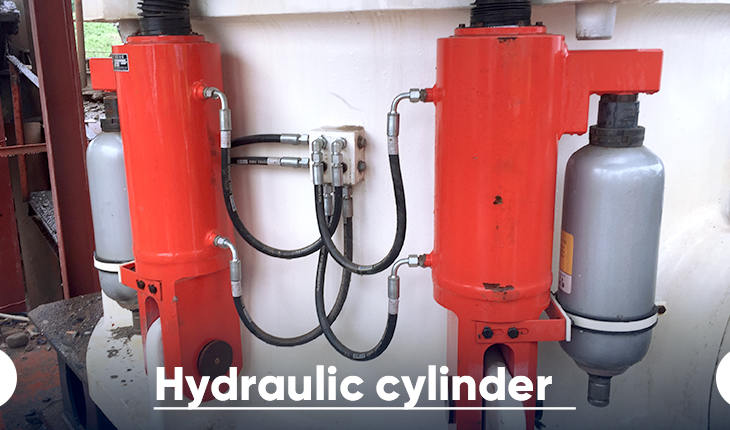
The hydraulic cylinder greatly improve the working efficiency
Adjust the motor circuit by using a shuttle valve to control the motor running and stopping. Due to the working nature of the host, the motor needs to have a brake function. Therefore, the shuttle valve is used to control the brake of the motor. Thus, the motor can realize the function of oil-braking and oil-cut braking.
Accumulators are used to absorbing shocks in the iron release and cleaning circuits. Due to abnormal operation or excessive crushing force generated by the crusher when the main machine is working, the adjustment ring rises upward. When the adjustment ring rises, the hydraulic oil in the upper cavity of the hydraulic cylinder will be squeezed into the accumulator, then the nitrogen in the accumulator is compressed.
After that, the compressed nitrogen forces the hydraulic oil to return to the hydraulic cylinder, and the piston rod of the hydraulic cylinder is retracted, and the adjustment ring is returned to the original position. This circuit uses an accumulator to absorb shocks easily, easily and reliably.
How many types of hydraulic cone crushers are there?
The most common types of hydraulic cone crushers are single-cylinder cone crusher, multi-cylinder cone crusher, and fully hydraulic crusher.SC series single-cylinder hydraulic cone crusher is developed with advanced crushing technology, integrating mechanical, hydraulic, electrical, intelligent control, etc. The single-cylinder hydraulic cone crusher has a new crusher structure, optimized laminated crushing cavity type, and a fully intelligent automation control system. In general, it can be widely used in medium crushing, fine crushing, and ultra-fine crushing operations.
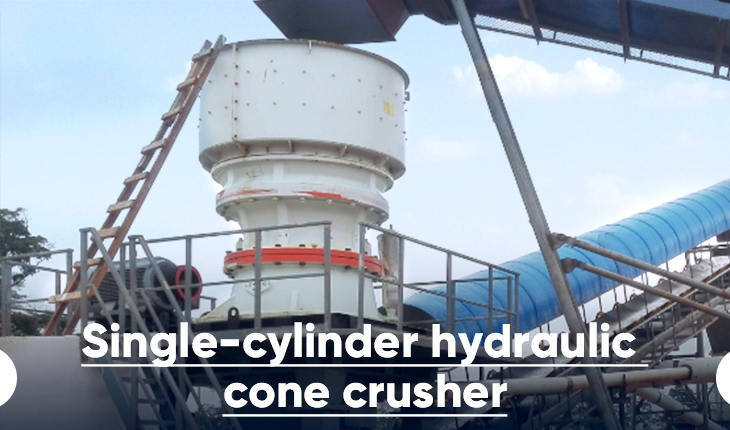
The working site of the cone crusher in India
Multi-cylinder hydraulic cone crusher is suitable for crushing various ores and rocks with medium or higher hardness, such as limestone, iron ore, cobblestone, non-ferrous metal ore and so on. Its high speed, high crushing capacity, and unique patented design make the crushed finished product a high-quality cube shape, and the easy maintenance feature can ensure its high stability operation.
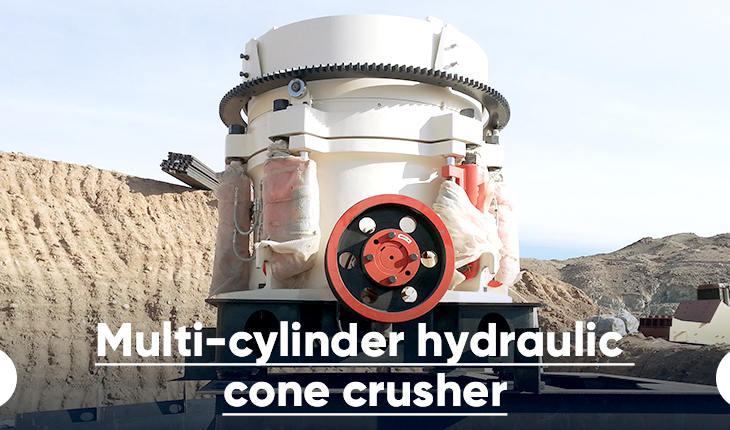
Multi-cylinder hydraulic cone crusher is widely used to process hard rocks
The full-hydraulic cone crusher is a new cone crusher that combines advanced multi-cylinder hydraulic cone crusher and PSG cone crusher. This machine adopts advanced design concepts and is optimized and designed. The fine-grained content in the crushed product is higher, and the content of the granules smaller than the closed-side discharge can reach 80%, which can significantly improve the processing capacity of subsequent processes and reduce comprehensive energy consumption.
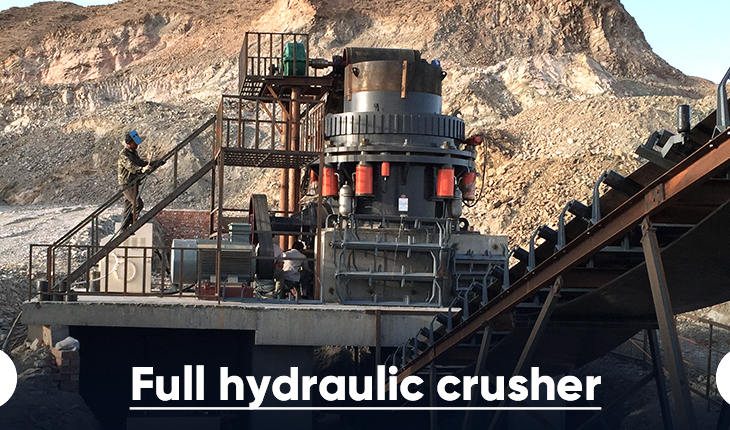
Full hydraulic cone crusher produce the product with good shapes
The successful combination of high-performance crushing cavity type and high crushing frequency has greatly improved the processing capacity of the machine. Due to the principle of lamination crushing, the crushed products are mostly cubic structures, which greatly reduces needle-shaped materials.





